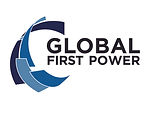Nuclear Energy & Small Modular Reactors
Nuclear power is one of the best ways to meet the world’s increasing energy demands: a clean, reliable and cost-effective energy source without the environmental impact of greenhouse gas and carbon emissions.
Experts around the globe agree that no single source can solve this challenge: we need a mix of sources. According to a report from the International Energy Agency, released in May 2019, “A collapse in investment in existing and new nuclear plants in advanced economies would have implications for emissions, costs and energy security.”
Nuclear energy is one of Canada’s safest and most efficient energy sources. It produces clean, baseload power—24 hours per day, 7 days a week. Today, approximately 15% of Canada’s electricity needs are met by nuclear; in Ontario that number is 60%. In fact, the extensive use of nuclear in Ontario is why the electricity system is currently 96% free of smog and carbon emissions.
Nuclear Energy - How it Works
Like traditional power-generating equipment, nuclear reactors generate heat, which is then used for various energy uses, including generating electricity. What is unique about various forms of power generation is how the heat is produced.
Instead of burning coal, oil or natural gas, nuclear reactors generate heat by splitting uranium atoms, including the design for GFP’s proposed Chalk River project.
Learn more about how USNC’s MMR® energy system generates electricity.
Small Modular Reactors
The nuclear reactor design that GFP is proposing to operate at the Chalk River site is the MMR® technology system, designed by USNC.
Small modular reactors—or SMRs—are the next evolution in the nuclear industry. They are a type of nuclear reactor designed to be smaller in size and output than a traditional reactor but based on the same science: using fission to create heat, which can then be used to generate electricity or for other uses.
They are designed to be modular: their components are factory-constructed to reduce cost and then transported to site for assembly; and more modules (units) can be added relatively easily in case of additional energy or electricity needs.
SMRs have valuable uses beyond electricity generation—they can also heat homes and commercial buildings, support hybrid energy systems, power water desalination systems, heat greenhouses, and more.
Small reactors have existed for more than 50 years since the beginning of reactor technology, like the research reactor at McMaster University in Hamilton, Ontario and at Royal Military College in Kingston, Ontario.
Today, there are more than 150 proposed designs worldwide. The new designs being considered today incorporate a range of advanced safety features and manufacturing techniques intended to provide reductions in construction and operating cost, while learning from experience of operating reactors all over the world.
View this video to learn more about SMRs and their proposed uses across Canada.
Canada’s SMR Roadmap
In 2018, representatives from across Canada—including industry, government, utilities and other interested stakeholders—began a conversation about the potential to bring SMRs to Canada. That collaboration resulted in a report that outlines the framework for the potential deployment of SMRs in Canada, including a number of recommendations that will help bring the benefits of this advanced energy potential to Canada.
GFP is proud to be helping advance the deployment of SMRs in Canada through our participation in Canadian Nuclear Laboratories’ demonstration project. Read more about Canada’s SMR Roadmap.
